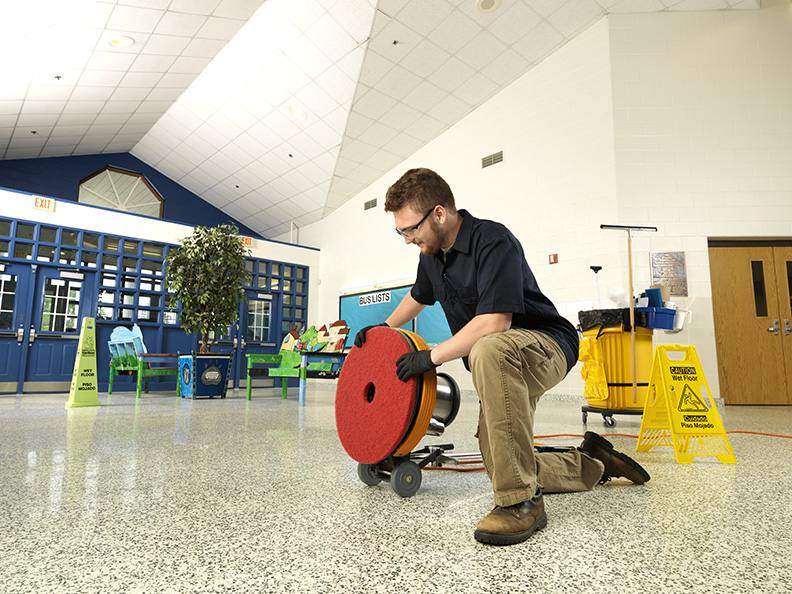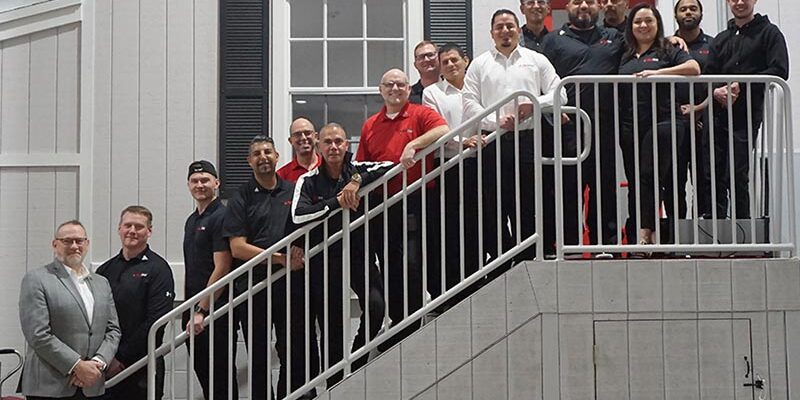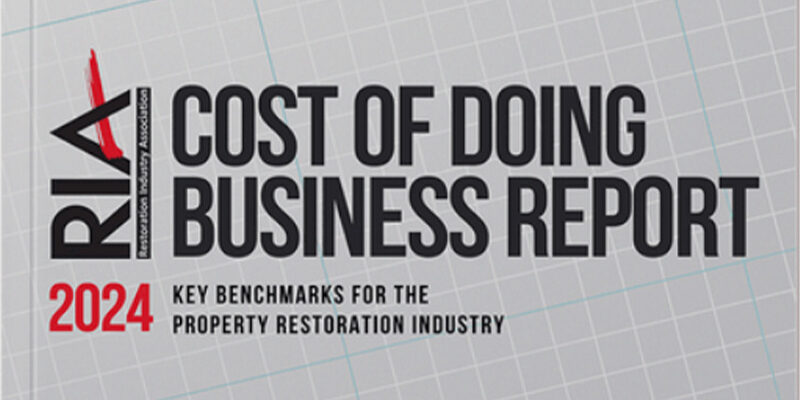Don’t Forget the Floor Pads

When it comes to floorcare, carpet cleaning technicians offering floor care services typically focus on the machines, tools and procedures used to perform tasks such as cleaning, scrubbing, stripping, buffing, burnishing or polishing.
What is often overlooked – and it is actually one of the most important elements in floor care – is the pad. Quality, construction and design are all floor pad factors that will have a direct effect on floor care budgets as well as the appearance of your customers’ floors.
First, carpet cleaners should know that the quality of floor pads can vary, and quality can have a big impact on worker productivity. Because time is money in the carpet cleaning industry, a poorly performing pad can make a big – negative – impact on your profits.
We should also note that while floor pads can vary in quality, they can vary as to how green and sustainable they are. In a sense, we are still in a “self-certify” mode when it comes to floor pads. This means some manufacturers have their own set of standards when it comes to what a green and sustainable floor pad is, which may not be the same as another manufacturer.
The bottom line is that some are considerably more sustainable than others. Because floor pads typically have a short life span, selecting the most sustainable floor pads is an environmental issue to be aware of.
Floor pad basics
Just so we are all on the same page when it comes to floor pads, these are typically placed under a low-speed (175 rpms or 350 rpms) floor machine or a burnisher. Some technicians still shampoo carpet before extraction and use these types of floor machines.
The pads come in different sizes, are made of varying materials and are available in different colors. Colors are very important with floor pads because they indicate exactly what the pad is designed to do.
For instance, if a green scrubbing floor pad is mistakenly used when the task is to strip a floor, which would require a black pad, the result can be a lot of wasted time, labor and materials. This can lead to frustration, and worse, even damage to the customer’s floor.
Over the years, industry standards have evolved that determine the colors used for pads. In general, the darker the pad, the more abrasive, scrubbing and stripping capabilities it will have. However, a red pad manufactured by one company may not perform the same as a red pad manufactured by another.
Thus, when selecting floor pads, it is often a good idea for carpet cleaning techs to ask your supplier to let you “test” a couple of different pads from different manufacturers to see which is the most effective for your floor care needs.
Another floor pad basic is that proper care of the pad along with cleaning after use can impact the useful life of the pad. However, the key factor in how long a pad lasts is how it is used. Stripping pads have a very heavy workload and invariably the shortest life span. Conversely, polishing, buffing and even burnishing pads should wear more slowly and last longer.
What pads are made of
Most floor pads are made of three key components:
- Fibers
- Resin binders
- Abrasive (for stripping and scrubbing)
Fibers
Very often the fibers in a typical floor pad are made from polyester. The quality of the polyester fiber can vary – another reason to test drive a pad or two before making a selection – and some are made from varying percentages of petroleum, non-renewable, as well as recycled materials.
While this can help promote sustainability and minimize the use of natural resources, a new generation of floor pads has taken this a step further. These pads are made from bio-based plant and agricultural materials. Not only are these materials totally renewable, bio-based products are produced using less polluting processes than products made with petroleum or other non-renewable resources.
Resin binders
Resin binders are the glue that holds the pad together as well as what holds the abrasives to the pad. Many binders are made from non-renewable materials, but some are water-based, making them more environmentally responsible.
Abrasives
All pads have varying amounts of abrasive materials in them. It can be difficult to detect the quality of the abrasives in a pad, and even after it has been used, it may look the same but the abrasive materials – and the effectiveness of the pad – have been diminished. With the abrasives gone, carpet cleaners must flip the pad over and use the other side or select a new pad.
Pad selection
If there is one key takeaway from this article, it is that floor pads can vary in many different ways. While they may look the same and cost about the same, that does not mean they are the same. So what should carpet cleaners look for when selecting floor pads? For most floorcare tasks, the things to look for are:
- An open web design. All floor pads have thousands of crisscrossing fibers. A pad with an open web design allows soil from the floor to lodge in between those fibers. This helps remove soils from the floor, maintains the effectiveness of the pad and allows soil to be washed out, helping to reduce supply costs.
- Resiliency.To the naked eye, most floors look flat with little variation in height. However, there are often areas where a floor is higher or lower than other areas. We can call these “imperfections,” and due to the weight of the machine, as the floor pad is used over these imperfections, they can damage the pad or shorten its lifespan. Look for a pad with more resiliency. This can be tested using the following quick and easy trick: pinch the edge of the pad between your thumb and index finger. If the pad bounces back to its original shape almost immediately, it’s a higher-quality, resilient pad.
- Denier. This term refers to the gauge or thickness of the fibers in the pad. While all pads will have some fibers which are thinner, a long-lasting pad will have a higher percentage of heavier, thicker fibers.
A final thought on floor pad selection is to pay attention to new technologies in floor machines and the cleaning solutions used to clean and maintain floors. As these technologies evolve, it may necessitate using different types of pads. And always view all of the equipment used in floor care as part of a system: the machine, the chemicals and, of course, the pads.
Dennis Knapp is Director of Product Development at Impact Products, LLC. His focus is jansan-related products, tools and equipment. He can be reached through his company website at www.impact-products.com.












